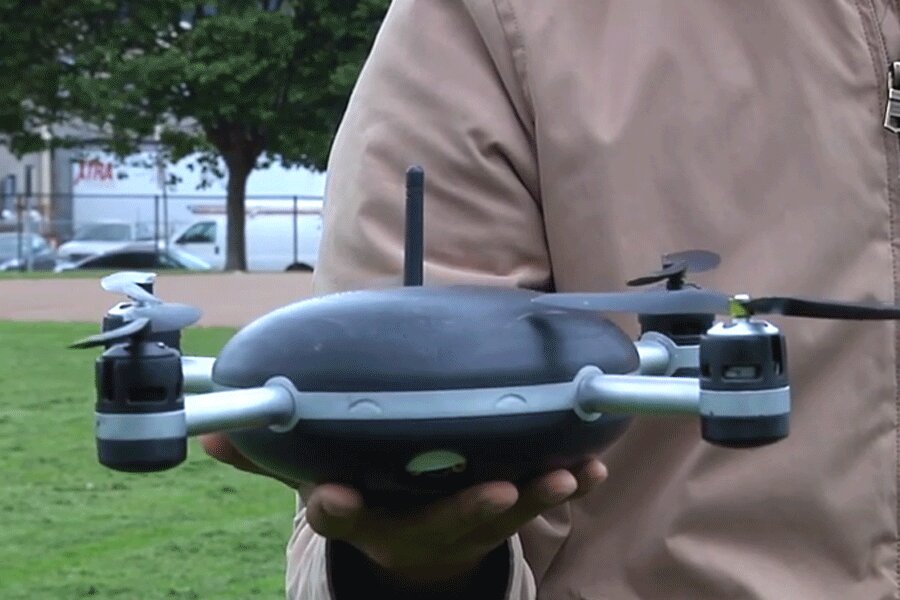Self-piloting Lily drone follows people on command
Loading...
The flying Lily Camera looks to resolve a pesky inconvenience with most personal drones: the need for a pilot to constantly maneuver an unmanned aerial vehicle (UVA).
Designed by action-sports enthusiasts, Lily is a robot crafted to give people control of an aerial camera from their wrists. Instead of someone using a remote control to direct the UVA, Lily is equipped with GPS and tracking technology and has the capability to follow whoever is sporting the wrist-worn controller. Users can even give the drones directions for different angles to shoot from, including circling a subject or moving in closer or further away.
Once Lily is flying high (up to 100 feet in any direction, to be exact), users have the option to tell the UVA to hover in one spot or follow a person's every move. Even when one reviewer attempted to lose Lily, running frantically in a zigzag pattern, it never lost sight, leaving him “genuinely impressed” with its tracking abilities. A nifty trick the creators added is that when the drone is no longer within remote range, it will automatically enter hover mode until it connects back with the wrist controller.
Lily is fast, too. The camera drone can travel up to 25 miles per hour and lasts up to 20 minutes on a full charge. So whether you’re snowboarding down the side of a mountain or tearing up a skate park, this UVA will seemingly catch your every move, including capturing any jumps you take off a hill in slow motion.
The camera equipment inside Lily is “roughly equivalent to the GoPro 3,” as Henry Bradlow, the chief technology officer and co-founder of Lily Robotics, told Wired. The camera can capture video at full HD 1080p video or slow motion at 720p. It can also take 12-megapixel stills photos, including 360-degree panorama photographs.
Some have compared the lightweight unmanned aerial vehicle’s shape to an M&M. Weighing 2.8 pounds, the drone is about 3 inches high and roughly 10 inches from end to end. The drone is also waterproof for anyone who requires a tag-along camera in the snow or rain.
Once you are done recording your awesome moves, Lily will return to you with the touch of a button. When you press the Land button on the Lily Tracker, the drone will locate you and hover directly above your hand. When a user taps the underside of the drone, Lily will power down in your hand. Think of it as calling back a falcon, without the threat of talons ripping apart your arm – watch out for those propellers, though.
But as Mr. Bradlow went on to tell Wired, he hopes to improve on Lily, which includes making it pocket-sized in the future. The drone also currently does not know how to avoid trees, a feature that will make it into later models, as Bradlow told IDG, so users are currently restricted to open areas without a lot of objects to hit.
The Lily Camera is expect to be released in February 2016, and will go for $999 at retail. Pre-orders are available on the site today for $499.








